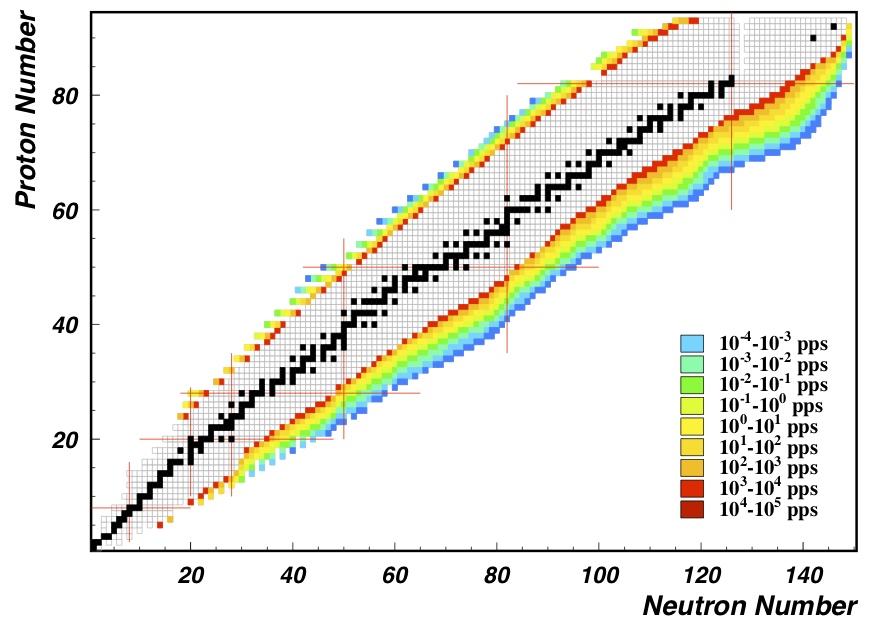Science
The Facility for Rare Isotope Beams (FRIB) will provide unprecedented access to exotic nuclei; approximately 80% of the isotopes predicted to exist up to uranium (Z = 92) will be produced. The FRIB Decay Station (FDS) — an efficient, granular, and modular multi-detector system designed under a common infrastructure — will have a transformative impact on our understanding of nuclear structure, nuclear astrophysics, fundamental symmetries, and isotopes of importance to applications.
The scientific program enabled by the FDS is well aligned with the overarching science goals that have been formulated by the broader nuclear science community, most recently outlined in the 2015 NSAC Long Range Plan. A total of seventeen specific benchmark programs were specified in the 2007 NSAC report “FRIB: Opening New Frontiers in Nuclear Science” that are matched to the overarching scientific questions. The FDS will contribute to the majority of the seventeen benchmark programs, which are highlighted in the table below.
Nuclear Structure
How does subatomic matter organize itself and what phenomena emerge?
1. Shell structure
2. Superheavies
3. Skins
4. Pairing
5. Symmetries
6. Equation of state
13. Limits of stabilty
14. Weakly bound nuclei
15. Mass surface
Nuclear Astrophysics
How did visible matter come into being and how does it evolve?
1. Shell structure
6. Equation of state
7. r-Process
8. 15O(α,γ)
9. 59Fe s-process
13. Limits of stabilty
15. Mass surface
16. rp-Process
17. Weak interactions
Fundamental Symmetries
Are the fundamental interactions that are basic to structure of matter fully understood?
12. Atomic EDM
15. Mass surface
17. Weak interactions
Applications of Isotopes
How can the knowledge and technical progress provided by nuclear physics best be used to benefit society?
10. Medical
11. Stewardship
The FDS is uniquely positioned to make crucial contributions towards discovery experiments at the extremes of the accessible regions, see FRIB beam rates. The high sensitivity and relatively low beam-rate requirements of the various decay spectroscopy techniques enable decay measurements at the very limits of the production capabilities at FRIB. In addition, for nuclei produced at higher rates, the FDS will enable high-precision measurements for thorough characterization of emergent phenomena, which can be used to benchmark and differentiate between leading models.
More specific science opportunities have been largely outlined in the FDS White Paper. A few highlights include:
- 60Ca region — the heaviest nuclei for which the neutron drip line and effects related to weak binding and many-body forces can be studied. The proximity of the neutron drip line may also lead to the formation of exotic structures such as giant neutron halos and Efimov states.
- 100Sn region — the heaviest N = Z nuclei where the effects of proton-neutron correlations can be studied and where new types of nuclear condensates may form.
- Neutron-rich N = 82 and 126 regions — the two regions near the limits of FRIB production where r-process simulations of the natural abundances of the elements reveal increased sensitivity to nuclear data input such as β-delayed neutron branching ratios, half-lives, and neutron-capture cross sections.
